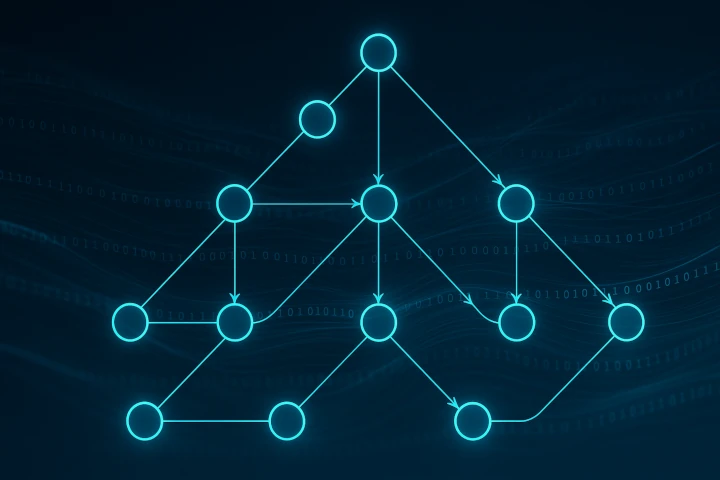intent-kit v0.7.0: Context That Works, DAGs That Scale


Key Points
Why move from trees to DAGs?
Trees enforce a single parent for each node, which limits reuse and creates brittle routing logic. DAGs allow nodes to be reused across multiple paths, enable more complex workflows, and reduce duplication.
What's new in the context system?
Context operations are now faster, more predictable, and come with deep debugging and execution tracing tools. There's also comprehensive documentation and a guide for best practices.
How does this help in production?
With reusable nodes and predictable context behavior, you can build workflows that are easier to maintain, scale, and test—critical for production reliability.
Is this a breaking change?
Yes. The shift to DAGs and the new context API changes how graphs are built and how context is managed. The documentation covers migration details.
Where should I start if I'm upgrading?
Review the new context management guide and DAG examples in the docs. They're designed to get you building quickly with the updated architecture.
intent-kit v0.7.0: Context That Works, DAGs That Scale
With intent-kit v0.7.0, the architectural shift from trees to DAGs is complete—and the context system has been re-engineered for speed, reliability, and clarity.
If v0.6.x was about breaking out of tree-based constraints, v0.7.0 is about making DAGs production-ready.
Why DAGs Beat Trees
Tree architectures force every node to have exactly one parent. That’s fine for simple workflows, but it quickly breaks down when you need:
- Node reuse across multiple execution paths
- Non-linear routing that doesn’t fit a strict hierarchy
- Efficient graphs without duplicating identical nodes
DAGs (Directed Acyclic Graphs) remove those constraints.
A node can be part of multiple flows, edges can branch in more complex ways, and you can model real-world workflows without fighting the architecture.
Context, Rebuilt
The new context system isn’t just faster—it’s observable.
What’s new:
- Execution tracing – See exactly how context changes as data moves through the DAG.
- Improved merge policies – Predictable rules for combining context from multiple paths.
- Better debugging tools – Context snapshots, error surfacing, and more helpful messages.
- Documentation that actually helps – Full protocol specs, best practices, and a context management guide.
The Payoff
This combination—DAGs plus a solid context layer—changes what’s possible:
- Reusable, testable workflows that don’t duplicate logic
- Predictable state handling even with complex fan-in and fan-out patterns
- Faster execution through optimized context operations
- Easier onboarding for teams and contributors
Breaking, But Worth It
Yes, there are breaking changes:
- Graph building now follows DAG rules, not tree rules.
- Context APIs have been streamlined and renamed.
- Some legacy constraints are gone—by design.
If you’re upgrading, the migration path is documented, and the new examples directory is designed to get you up to speed fast.
What’s Next?
With DAGs and the new context system in place, future releases will focus on:
- Advanced evaluation tools for DAG workflows
- Built-in remediation patterns for error handling
- Even more tooling for context visualization
intent-kit v0.7.0 is a foundation release: the architecture and context management are finally at a point where you can build production-grade AI workflows with confidence.
Check out the release and see how DAGs and a better context system can change the way you think about workflow design.